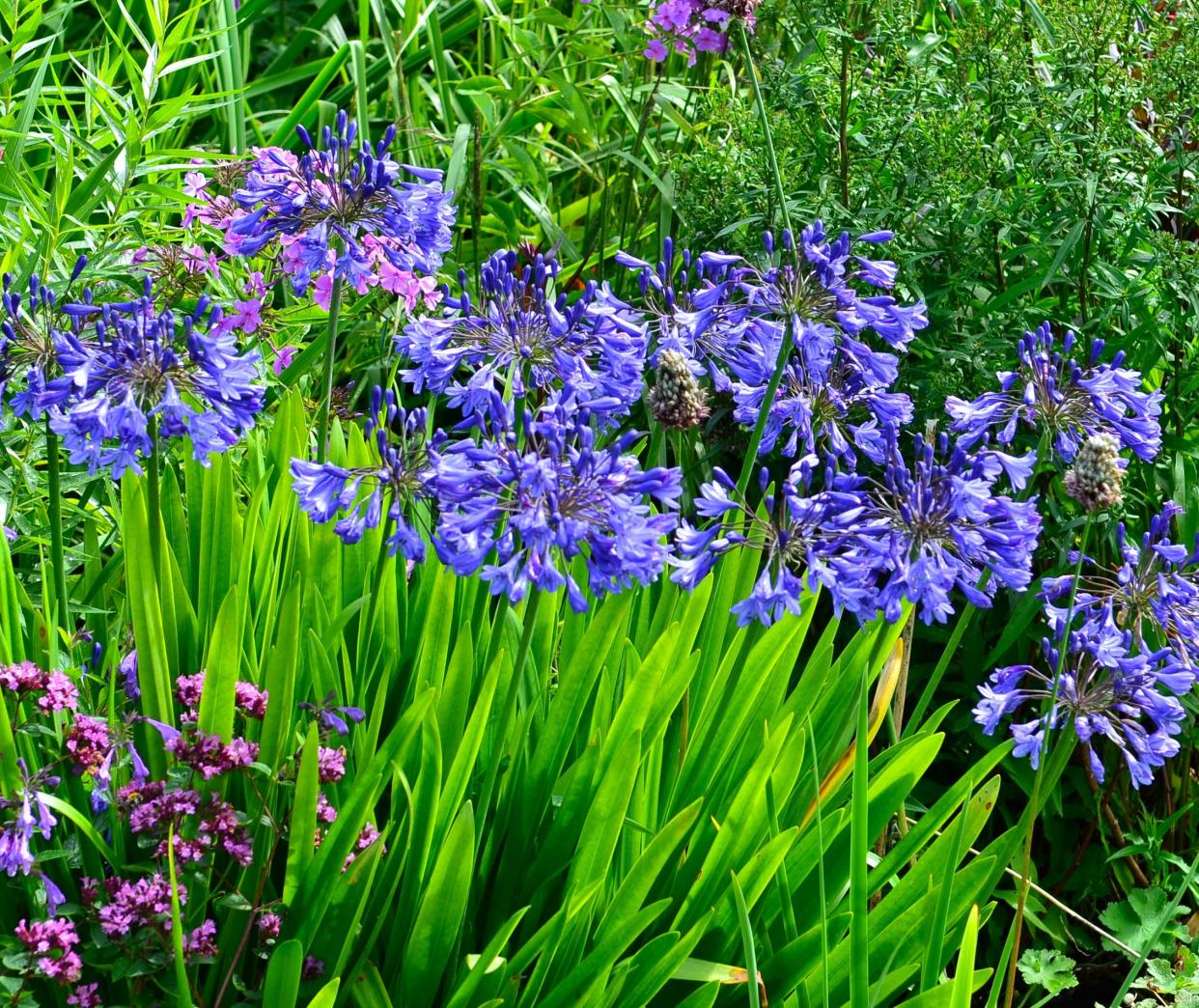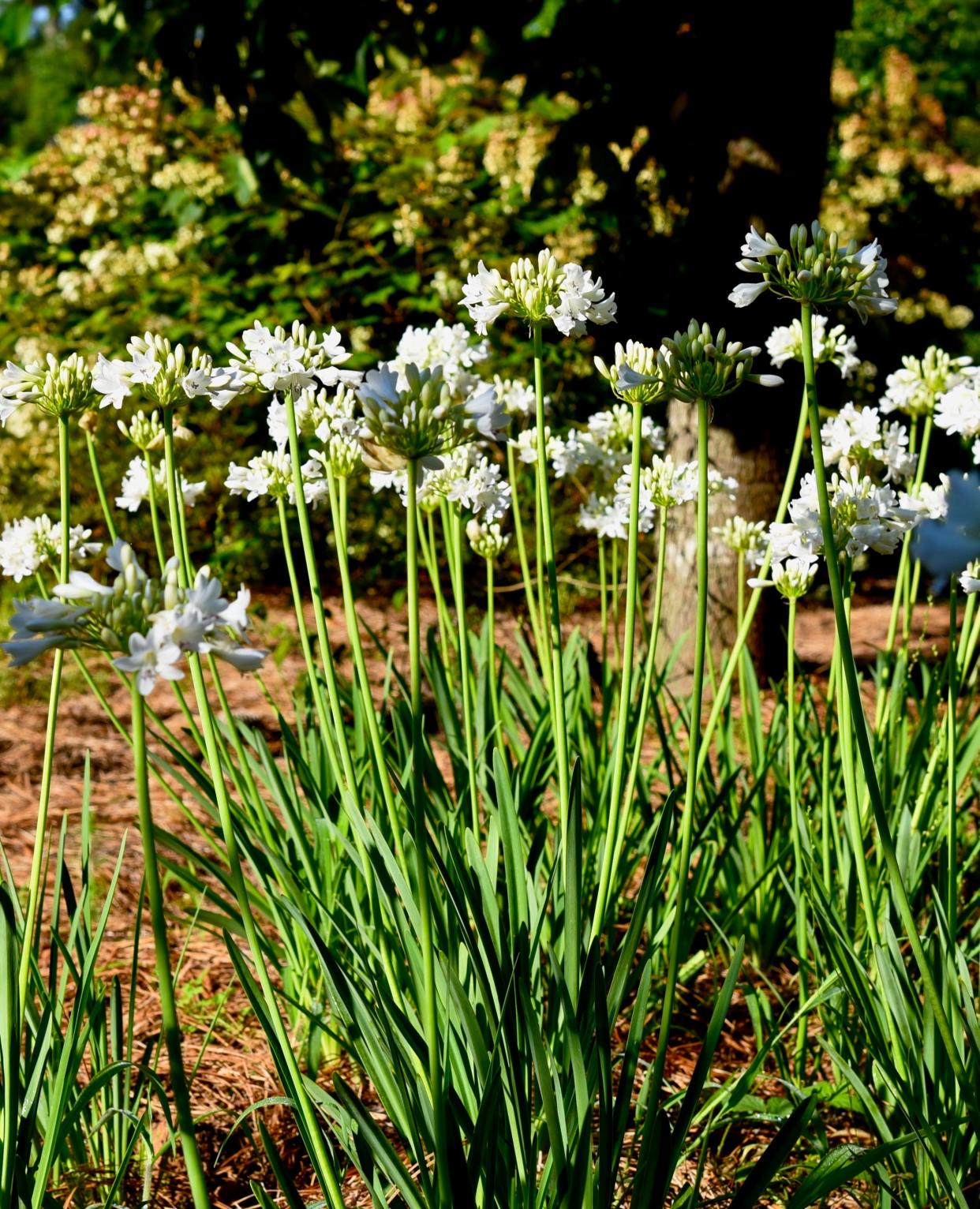Gardening: Choose Agapanthus for a tropical look

When looking in magazines or catalogues, you see more tropical looking plants offered these days to give your garden a more exotic look. For many years, as I would visit gardens in very warm climates, I fell in love with Agapanthus or Lily-of-the-Nile. They grew in places like Florida and California but not where I live in USDA hardy zone 7. The ones I loved had a big, blue, round head on top of a sturdy stem. I adored these plants and every time I would see them, I would think of how much I would love to have the growing in my garden.
I would read how these wonderful flowers would make quite a show in large containers on a patio and would add a striking touch to any planting scheme. But then you would have to bring the container inside for the winter months since they would not take any frost and with a growing family, I had enough to do. Agapanthus originated in the warm climate of South Africa and they wanted warm soil in the winter which I could not give them.
Then, about 8 years ago, I learned about some agapanthus that were cold hardy. I ordered and planted them and sure enough they grew and bloomed that summer and “low-and-behold” they did return. They were cold hardy in my zone 7 garden. These plants did not have the very large flower heads that I have seen growing in Florida and California. The leaves and globular heads were much smaller in size. I was thrilled to have the small blue round flowers in my flower border.
Moving forward several years, I learned that there was a nursery in Michigan that had developed a more cold hardy agapanthus that produced a larger bloom. These were developed by a company named Walters Garden and had been trialed in Michigan and were cold hardy in zone 6. These were advertised to produce spectacular spherical flower clusters that were packed with between 20 and 100 tubular and bell-shaped flowers on top of rounded clumps of foliage. These were just what I was look for and I started the search to find them.

The first ones I was able to purchase were Agapanthus ‘Galaxy White’. This plant has been a stunning performer in my garden where it is hot and humid, characteristics that some plants loathe. They start in early July with an abundance of 4-inch size heads of pure white. They claim to get to 36 inches in height, though mine have not gotten quite that tall. I first planted them about 10 inches apart and boy was that a mistake. Within a year, I had to move every other plant because they were about to touch one another.
A year or two later I was able to purchase Agapanthus ‘Galaxy Blue’. I love blue flowers and this one was what I had dreamed of having. The tall, slender stalks are topped with flowers that are a dramatic shade of blue with streaks of a darker blue. The clumps of the blue agapanthus are not quite as large as the white variety but it could be where I have them planted. The white agapanthuses are in my white garden in mass and the blue ones are mixed in my border.
I have had these wonderful flowers in my garden for a number of years now and they are one of my very favorite summer blooming plants. They are a beautiful garden focal point and planting them in mass, they make a dramatic show. Because the flowers are tubular shaped, they are loved by hummingbirds since hummingbirds favor this shape of flower. And if you prefer to have a shorter variet, Proven Winners offers a shorter blue one named ‘Little Galaxy’ which is said to be 22-inches in height.
Agapanthus like full sun and well-drained soil. The rhizomes should be planted 1 inch deep. Articles I have read all mention that they are drought tolerant. However, the instructions state that they preform best if they have consistent moisture which seems to benefit them. They die back to the ground in the winter and in cooler climates like zone 6, they would benefit from a protective layer of mulch to help keep them going.
I think of these exotic plants as maintenance-free perennials. They emerge in the spring and go dormant in the fall and you do not even have to clean up any leaves like you do some perennials. As the flowers fade in late summer, the flower stalks can be removed but I leave mine because I have a friend who is an avid flower arranger and she finds the dried flowers to be attractive and she comes and cuts some for her flower arrangements.
These exotic flowering plants like a more sandy-loam that is well-drained. I amended my clay soil and they do fine. The rhizomes should be planted 1 inch deep. If you want to divide them, I do this in early spring. The instructions say to plant 8 inches apart but that was too close, at least for the white ones because they grew together quickly as I mentioned. This variety is not evergreen but I do have the foliage for a long period of time. The foliage will die back to the ground during the winter months.
Look for these wonderful plants and I think you too will enjoy having them in your garden. I am thrilled that they are more cold hardy varieties available now.

Betty Montgomery is a master gardener and author of “Hydrangeas: How To Grow, Cultivate & Enjoy,” and “A Four-Season Southern Garden.” She can be reached at bmontgomery40@gmail.com.
This article originally appeared on The Fayetteville Observer: Agapanthus will add a topical look to your garden | advice
